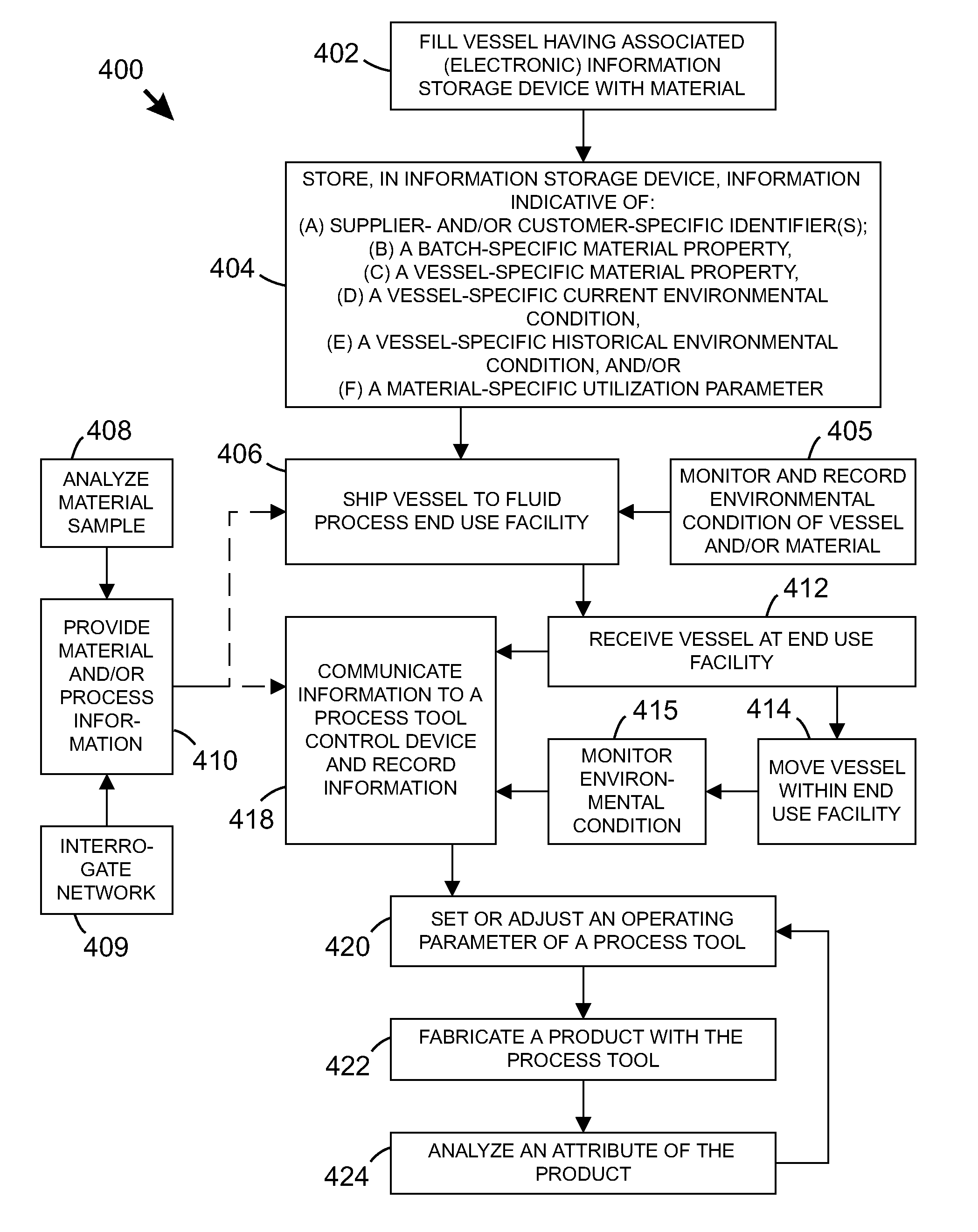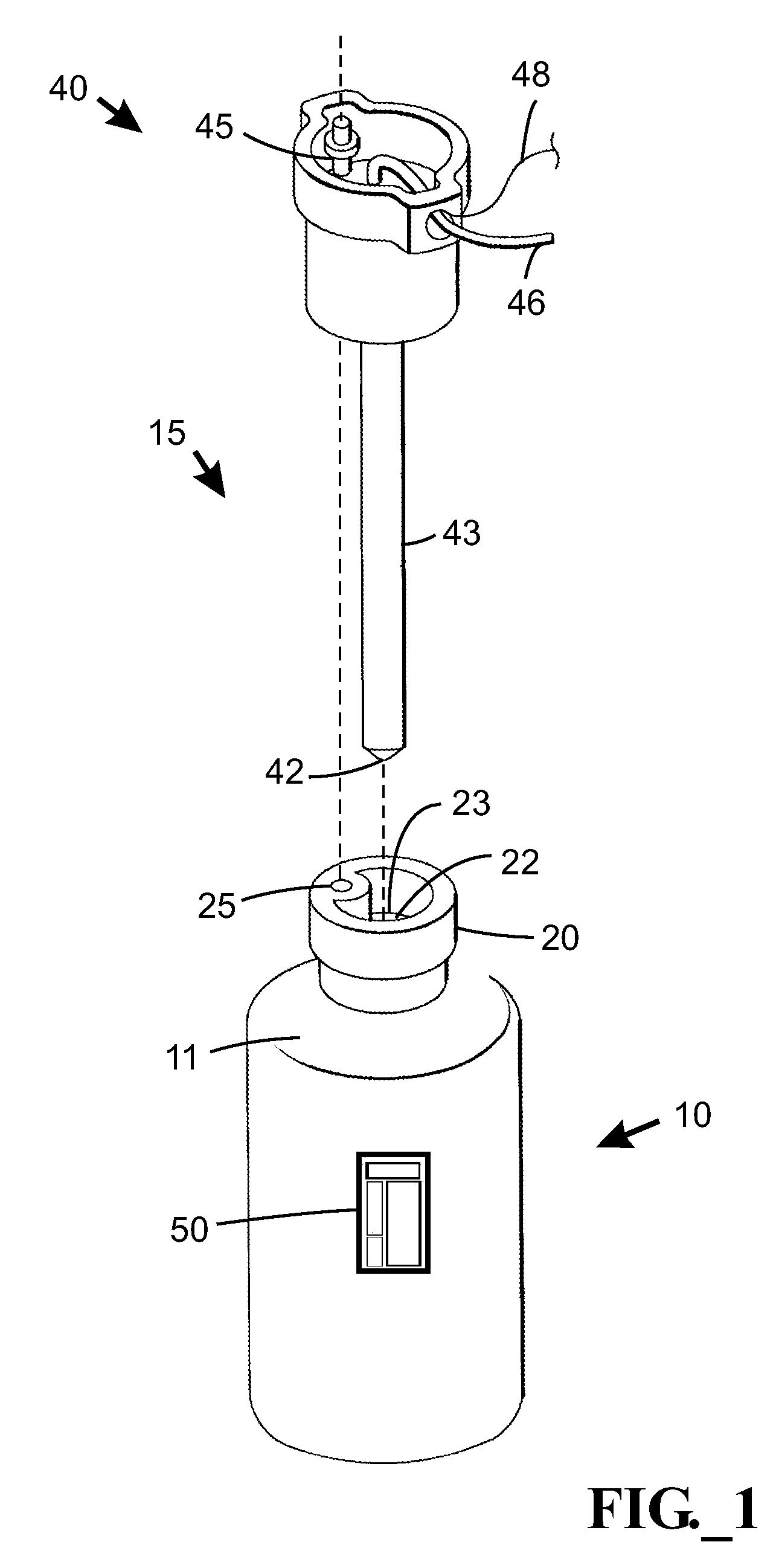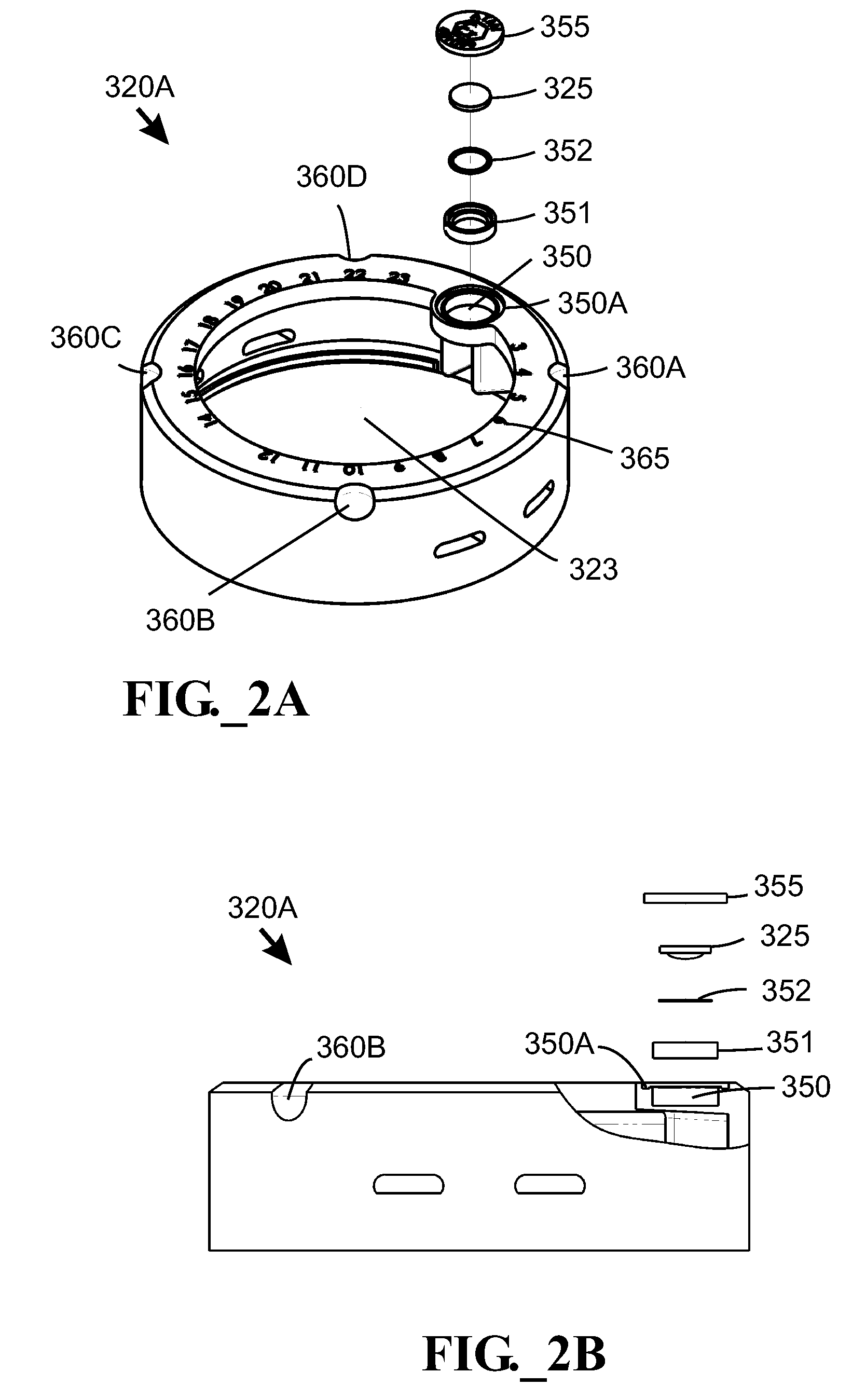Systems and methods for managing material storage vessels having information storage elements
a technology of information storage and material storage, applied in the field of information storage systems and methods, can solve the problems of high risk of error, inability to apply high cost of applying the wrong type of photoresist, etc. problem, to achieve the effect of avoiding the loss of material
- Summary
- Abstract
- Description
- Claims
- Application Information
AI Technical Summary
Benefits of technology
Problems solved by technology
Method used
Image
Examples
Embodiment Construction
[0032]The disclosures of the following United States Patents and patent applications provide context for the present invention, are hereby incorporated by reference herein in their respective entireties: U.S. patent application Ser. No. 10 / 742,125 filed Jul. 13, 2005 (and published as U.S. Patent Application Publication No. 2004 / 0172160 on Sep. 2, 2004) in the names of Kevin T. O'Dougherty, Robert E. Andrews, Tripunithura V. Jayaraman, Joseph P. Menning, and Chris A. Baye-Wallace for “SECURE READER SYSTEM;” U.S. patent application Ser. No. 10 / 139,104 filed May 3, 2002 in the names of Kevin O'Dougherty and Robert E. Andrews “LIQUID HANDLING SYSTEM WITH ELECTRONIC INFORMATION STORAGE;” U.S. Patent Application No. 60 / 710,216 filed Aug. 22, 2005 in the names of James V. McManus, Jerrold D. Sameth, and Frank DiMeo, Jr., for “MATERIAL CONTAINMENT SYSTEM;” U.S. Patent Application No. 60 / 687,896 filed Jun. 6, 2005 in the names of ““John Kingery, Dennis Brestovansky, Kevin O'Dougherty, Glenn...
PUM
| Property | Measurement | Unit |
|---|---|---|
| fluid property | aaaaa | aaaaa |
| physical adsorption | aaaaa | aaaaa |
| time | aaaaa | aaaaa |
Abstract
Description
Claims
Application Information
 Login to View More
Login to View More - R&D
- Intellectual Property
- Life Sciences
- Materials
- Tech Scout
- Unparalleled Data Quality
- Higher Quality Content
- 60% Fewer Hallucinations
Browse by: Latest US Patents, China's latest patents, Technical Efficacy Thesaurus, Application Domain, Technology Topic, Popular Technical Reports.
© 2025 PatSnap. All rights reserved.Legal|Privacy policy|Modern Slavery Act Transparency Statement|Sitemap|About US| Contact US: help@patsnap.com



